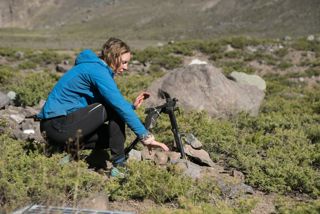
Meet our New Space Experts – Professor Suzie Imber
- 17th Jul 2024
- Author: Elliott Langley - Marketing Administrator
As you may remember, our friends at the University of Leicester recently appointed a team of Space Experts to work alongside the National Space Centre and share their incredible knowledge of space and STEM with us.
Now it’s time to meet the second of our resident Space Experts, Suzie Imber, a Professor of Space Physics, specialist researcher on Space Weather, Mercury expert, Mountain Rescue volunteer, and an accomplished high altitude mountaineer!
She is also a long-time friend of the National Space Centre, having joined us for Space Lates, careers days and livestreams.
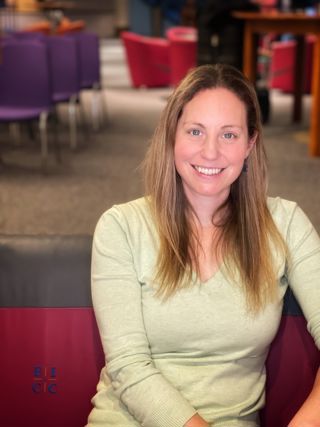
Thank you so much so joining me Suzie, it’s great to have you here. What does being a Space Expert entail?
Being a Space Expert is all about looking into what’s coming up and keeping the National Space Centre informed, which will be really helpful for the charity. Hopefully we’ll be able to share insights from our specialised fields that help you with forward planning for new exhibitions, new events, telling stories, and so on. It’s really exciting, it means I get to work with the National Space Centre even more.
And you’re no stranger, is that right?
Not at all, I’ve been here a thousand times… well, maybe not quite that many, but it’s definitely a lot! I’ve been here so many times for Space Lates events and careers days, where I’ve appeared as a guest speaker and offered advice on how to start a career in STEM. I also do a lot of outreach and public engagement work with Josh [Barker, our Education and Outreach Officer], and I also organise our experience programmes… you might be able to hear them actually, I have a group of my work experience students downstairs.
Amazing! How many Space Lates have you attended?
Oooh, at least 3. It’s great to be on stage with an audience that is really engaged with what I’m talking about. I also helped with a lot of live streaming whilst the National Space Centre was closed during the pandemic, I did a Q&A with Malika and Sophie from the Centre.
I seem to remember you also did some tasting after we reopened.
That’s right! It was a video we did when you were doing your Mission Cake cookery book. Dallas Campbell and I had to try to identify cake flavours and figure out what they had to do with space. There were some interesting flavours… the bacon-flavoured cake was a memorable experience.
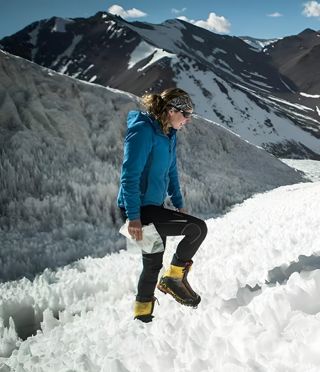
Your designated area of expertise is Going Out. Does that mean you enjoying socialising a lot, or does it have a deeper meaning?
It’s a snazzy way of saying “planetary science research”, which is definitely my area. But I do enjoying going out in the general sense too! There’s some overlap with the work that Sarah [Casewell] does, in that she looks at astronomy and I focus on space physics. Where it varies is that, in space physics, we normally focus on our own solar system, whilst astronomers are often looking at distant objects. That means they have to use telescopes or other remote sensing instrumentation to study objects, whereas we can actually send missions out and take measurements.
And how did you get into that field?
I did my degree in Physics and then came to the University of Leicester to do a PhD in Space Plasma Physics, where I focused on the Earth’s environment using a combination of ground-based instrumentation and space observations to understand the relationship between the Sun and Earth.
I was interested in how energy from the Sun and solar wind is transferred to Earth’s magnetosphere, stored, and released, generating beautiful northern lights, but also potentially damaging space weather effects. The biggest Space Weather event that we know of happened the 1850’s and is called the Carrington Event, which was an intense geomagnetic storm. If that happened today, it would have the potential to damage satellites, astronaut health, communication systems, power grids, and so on.
After my PhD, I moved to NASA for a few years as a research scientist at NASA Goddard Research Centre, then I moved back to Leicester to pursue an academic career.
Were there any highlights from your time at NASA?
The one that stands out is when the NASA spacecraft MESSENGER arrived at Mercury and became the first spacecraft to orbit the planet. It was a long time coming, as there had been fly-bys that passed near Mercury, but MESSENGER was the first to orbit. I was involved in data analysis for that mission, with a focus on space weather - Mercury experiences extreme space weather events every day far larger than what we typically see on Earth. Understanding extreme events like these events can help us prepare for such an event happening on Earth again.
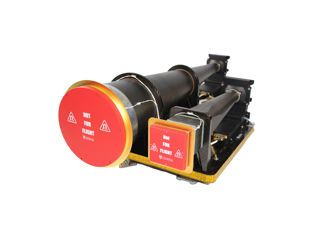
And you’re also involved with BepiColombo as well, which has a link to Leicester, is that right?
Absolutely! I’m a co-investigator on the Mercury Imaging X-ray Spectrometer (MIXS), which was designed and built by the University of Leicester. People often wonder what the link between Leicester and space is, and that’s a really good example right there!
It is designed to measure X-rays coming from the surface of Mercury, which will tell us what the surface of Mercury is made of. That knowledge will help us understand the formation and evolution of planets. It will also observe the aurora which is visible in X-rays on Mercury, and so will be invaluable in our research into space weather.
And of course, there’s an actual flight spare of MIXS on display in your galleries, so it’s always nice to have a look at it whenever I drop in.
Would you go into space if you had the chance?
Yes! 100% yes. I actually took part in a BBC2 television series in 2017 called Astronauts: Do You Have What It Takes, and I won!
Wow, congratulations! What did that entail?
It was hard work but so much fun. Canadian Astronaut and ISS Chris Hadfield was the judge, and we had to carry out astronaut training in order for him to pick one candidate. So things such as taking my own blood, speaking Russian while in a centrifuge at 5g and carrying out emergency procedures on the NASA undersea astronaut training facility, Aquarius. There were 12 of us in total, and after some gruelling challenges, Commander Hadfield selected me to have on a rocket ship alongside him.
So you’re just waiting for a phone call now…
Absolutely yes, I’m ready to go!
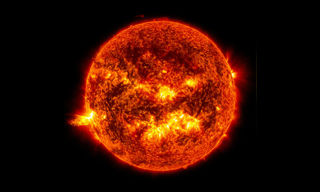
You mentioned that you’re involved with work experience. Do you have any advice for people who are looking to start a career in STEM?
I accidentally ended up working in this field! But I was always really interested in it. So my advice is to pick something that you are interested in and just keep going. I studied physics and space because I was genuinely interested in those subjects, and so I did my degree and PhD purely for the love of the field. I didn’t have a masterplan, my interests lead me to it.
Sometimes it can work out not to have a big plan, because that way you’re open to new opportunities and experiences, and you can go into all sort of directions.
And what is your current focus?
I’m really passionate about widening access to Higher Education. A lot of the community work I do is to help young people to understand that university is available to everyone. It’s something that Josh and I care deeply about, and we create spaces where children can learn about opportunities that are available to them.
I’m also working on a project with the Royal Society, which is looking at space in 2075 and beyond. We’re looking at what the future of space looks like and what legislation needs to be in place; so thinks like manufacturing in space, mining the moon, humans living and working on space, space-based nuclear power. So we’re looking at what regulations need to be in place to preserve space, similar to the Antarctic Treaty.
Do you think about space a lot?
I think about my job a lot! There aren’t enough hours in the day. But I’m not always thinking about space, no. I can stay grounded here on planet Earth.
What’s your favourite thing about space?
Hmm… I don’t think I can pick just one! Everything about space is amazing!
Quick fire, no time to think: what’s a cool space fact? Go!
[No hesitation] The Sun’s magnetic field flips every 11 years.
Wow [mind blown]… so the Sun flips over like a fried egg every 11 years?
Well, not quite! The magnetic field of the Sun changes polarity every 11 years. One indicator of the changing solar magnetic field is the number and location of sunspots on the solar surface.
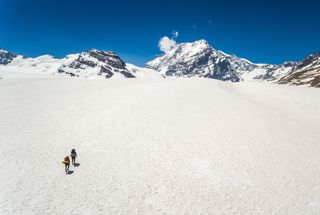
That was a cool space fact. And speaking of things that are cool, I understand you’re an accomplished climber.
Nice segue! Yes, I’ve been climbing mountains since 2008. I’d say I’m a better ice-climber than rock-climber. I got really interested in climbing the Andes for many years, because they’re typically really quiet and empty, which I like.
Is there any crossover with your work in STEM and your climbing?
Believe it or not, yes! There’s a very small Venn diagram of people who have overlapping interests of computer programming, big data analysis and mountaineering. I’ve been really interested in mapping the location of mountains in the Andes. They were originally mapped by a chap called John Biggar, who did it with just a pencil and map. He did a great job with the tools he had at his disposal. Thankfully these days, I have access to a supercomputer and the ability to write code for massive data analysis projects.
So I went to the Earth Observation Science Department and got my hands on some data, and after I mathematically defined what a mountain is, and wrote the code to find all the mountains, I realised that there were a number of unnamed and unclimbed mountains in the Andes. So I set off to climb some of these!
What was amazing was reaching the top of these remote and difficult-to-climb mountains and finding an Inca ruin at the summit. So the Inca were there centuries ago and no one knows why they climbed, but they left small towers about a meter high, and we don’t know what they were for. It’s fascinating. I love mysteries like that.
I’ll be pondering that as I fall asleep tonight. So finally, what does #SpaceForEveryone mean to you?
It’s all about lowering barriers and supporting people’s interests and focusing on people who don’t have a family or community background in studying STEM. That’s why the University and National Space Centre work so well together, because we have a shared goal. There’s a lot of strength in this one area.
A massive thank you to Suzie for taking the time away from research, climbing and mountain rescuing to talk to me and share so many fascinating stories and insights!
You can find Suzie’s website here.
I will be meeting our next Space Expert in a few weeks; in the meantime check our What's On page for information on our next Space Lates event.

